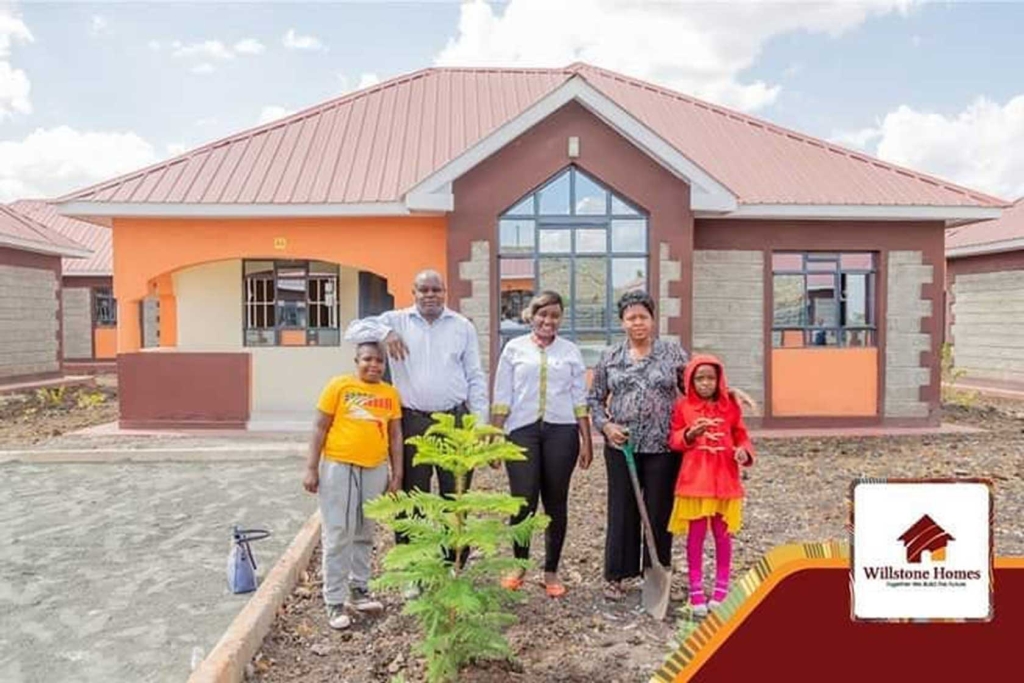Owning a home is a dream for many Kenyans, but the rising cost of real estate often makes financing a necessity. With Kenya’s real estate market experiencing steady growth, understanding how to secure financing for your dream home in Kenya is more important than ever. Whether you’re a first-time buyer or looking to upgrade, navigating the various financing options—from traditional mortgages to government-backed schemes—can be overwhelming. This guide will walk you through the essential steps, from assessing your financial readiness to finalizing your home purchase, ensuring you make informed decisions on your path to homeownership.
This article provides a comprehensive guide to navigating the various financing options available in Kenya, from traditional mortgages to alternative methods like Sacco loans and chamas. By understanding the process and preparing adequately, you can turn your dream of homeownership into a reality.
Read also: Top Factors That Influence Property Prices in Kenya
2. Assessing Your Financial Readiness
Before diving into the home-buying process, it’s essential to evaluate your financial situation.
Evaluating Income, Savings, and Expenses
Start by analyzing your monthly income, savings, and expenses. Lenders typically require proof of stable income to ensure you can meet mortgage repayments. A general rule of thumb is that your monthly mortgage payment should not exceed 30% of your gross income.
Importance of a Good Credit Score
A strong credit score is crucial for securing favorable loan terms. In Kenya, credit scores are managed by the Credit Reference Bureau (CRB). Paying bills on time, reducing outstanding debt, and avoiding blacklisting can improve your creditworthiness.
Setting a Realistic Budget
Determine how much you can afford to spend on a home by factoring in the down payment, monthly repayments, and additional costs like legal fees and insurance. Avoid overstretching your finances to ensure long-term affordability.
3. How to Secure Financing for Your Dream Home in Kenya: Exploring Financing Options
Kenya offers a variety of financing options tailored to different needs and financial situations.
Mortgage Loans
Mortgages are the most common way to finance a home. They come in different forms:
- Fixed-Rate Mortgages: Interest rates remain constant throughout the loan term, providing predictability.
- Adjustable-Rate Mortgages: Interest rates fluctuate based on market conditions, offering lower initial rates but higher risk.
- Islamic Mortgages: Sharia-compliant financing options for those seeking interest-free loans.
Sacco Loans
Savings and Credit Cooperative Organizations (Saccos) offer competitive interest rates and flexible repayment terms. Members can access loans based on their savings history, making Saccos an attractive option for many Kenyans.
Bank Loans
Banks in Kenya provide a range of mortgage products. Compare interest rates, repayment periods, and additional fees to find the best fit. Some banks also offer pre-approved mortgages to simplify the process.
Government-Backed Financing
The Kenyan government has introduced several affordable housing schemes under the Big Four Agenda. Programs like the Boma Yangu Initiative allow buyers to save toward homeownership while benefiting from government incentives.
Employer-Sponsored Home Loans
Some employers offer home loan schemes as part of their employee benefits. These loans often come with lower interest rates and favorable terms.
Alternative Financing Methods
- Chamas: Investment groups can pool resources to purchase property collectively.
- Peer-to-Peer Lending: Online platforms connect borrowers with individual lenders, offering flexible terms.
Read also: The Role of Smart Home Technology in Real Estate Value
4. Steps to Applying for a Mortgage in Kenya
Securing a mortgage requires careful planning and preparation.
Choosing the Right Lender
Research lenders to compare interest rates, loan terms, and customer reviews. Consider both banks and non-bank financial institutions.
Understanding Mortgage Terms
Familiarize yourself with key terms like loan-to-value ratio, amortization, and prepayment penalties. Choose a repayment plan that aligns with your financial goals.
Required Documents
Prepare the necessary documentation, including:
- National ID or passport
- Payslips or proof of income
- Bank statements (typically for the last 6 months)
- CRB clearance certificate
- KRA PIN certificate
Pre-Approval Process
Obtaining pre-approval gives you a clear idea of how much you can borrow and strengthens your position when negotiating with sellers.
5. Overcoming Financing Challenges
Financing a home in Kenya can come with hurdles, but these can be managed with the right strategies.
Dealing with High-Interest Rates and Inflation
Interest rates in Kenya can be high, especially for unsecured loans. Opt for fixed-rate mortgages to protect against rising rates.
Increasing Loan Eligibility
Consider joint applications with a spouse or family member to increase your borrowing power. Extending the loan term can also reduce monthly payments, though it may increase the total interest paid.
Managing Debt
Avoid taking on additional debt during the home-buying process. Prioritize paying off existing loans to improve your debt-to-income ratio.
6. Legal Considerations and Hidden Costs
Understanding the legal and financial aspects of homeownership is crucial to avoiding surprises.
Property Valuation and Legal Fees
Hire a professional to conduct a property valuation to ensure you’re paying a fair price. Legal fees for conveyancing and title transfers typically range from 1% to 2% of the property value.
Stamp Duty and Insurance
Stamp duty is a government tax on property transactions, calculated as a percentage of the property’s value. Additionally, consider home insurance to protect your investment.
Working with a Lawyer
A real estate lawyer can help navigate the legal complexities of property transactions, ensuring all documents are in order and your interests are protected.
Read also: Quality and Affordable Gated Communities in Kenya
7. Finalizing Your Home Purchase

Once financing is secured, the final steps involve completing the transaction and preparing for homeownership.
Signing Agreements and Securing Funding
Review all agreements carefully before signing. Ensure the funds are disbursed according to the agreed timeline.
Steps Before Moving In
Conduct a final inspection of the property to ensure it meets your expectations. Plan for moving expenses and any necessary renovations.
Long-Term Financial Planning
Homeownership is a long-term commitment. Create a budget that accounts for maintenance costs, property taxes, and potential changes in income.
Securing financing for your dream home in Kenya is a journey that requires careful planning, research, and informed decision-making. By exploring the diverse financing options available, from bank mortgages to Sacco loans and government programs, you can find a solution that aligns with your financial goals. Remember to assess your financial readiness, compare lenders, and prepare for hidden costs to avoid surprises along the way. With the right strategy and determination, you can turn your dream of owning a home into a reality. Start your journey today and take the first step toward how to secure financing for your dream home in Kenya.
Read also: Invest in Kenyan Real Estate Seamlessly with Willstone & Bank of America




